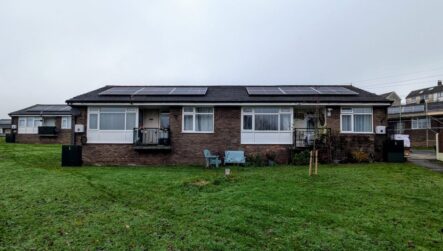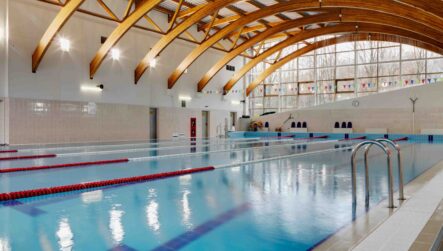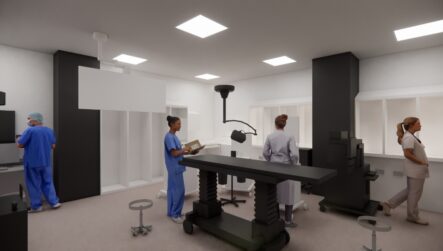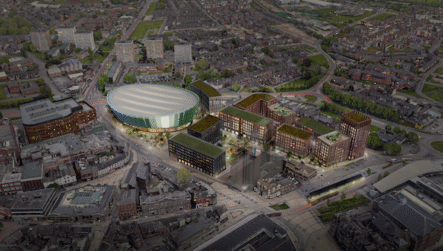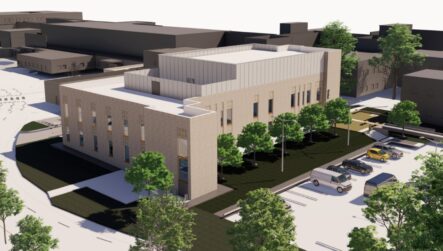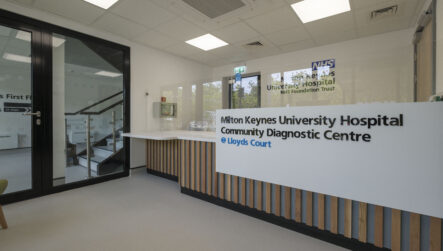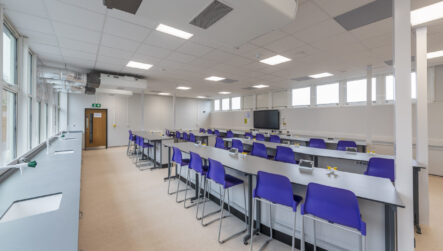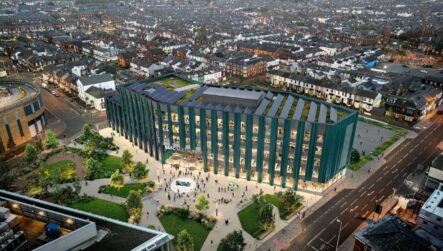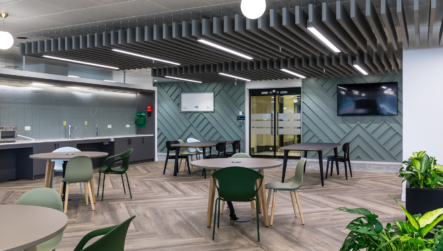Construction begins on new net zero carbon building at Arts University Bournemouth

Arts University Bournemouth (AUB) plans to create an ambitious new net zero carbon (NZC) academic building, as part of its long-term masterplan vision. The university had secured outline planning permission in 2016 for an extension of the south of the campus to include the new arts building.
Faithful+Gould was appointed in April 2021 via our Professional Services Framework to take AUB’s project through RIBA Stages 2 and 3 design, including reserved matters planning submission. The university was under pressure to meet the deadline to retain the 2016 outline planning consent, so fast mobilisation of a talented multidisciplinary team was needed.
Using our framework meant that Faithful+Gould could provide AUB with a swiftly procured trusted supply chain. They introduced a choice of suppliers, via a mini competition, which they conducted collaboratively with our client. This produced an excellent team, 92% of whom were local businesses, led by Faithful+Gould.
The design creates a flagship NZC 8000m² four-storey building, central to AUB’s ambition for a more sustainable campus, and encompassing both embodied and operational carbon perspectives.
The north-south orientation optimises daylighting to the studio spaces while parametric design has been used to control heat loss and solar gain. Extensive testing and modelling has resulted in a compact form factor, renewable energy, air tightness and insulation.
The building’s structure and materials have been selected for their low embodied carbon content and the ability to re-use or re-cycle. A hybrid steel and glulam frame with cross-laminated timber floor planks will form the primary structure, with cladding in locally quarried Portland stone.
They led extensive stakeholder engagement to clarify the scope, holding a series of workshops to explore different needs. This resulted in an optimal proportion of social, teaching and ancillary spaces, and also a phased delivery approach which aligns with the university’s funding strategy.
A top-lit central atrium running the length of the building is key to the natural ventilation strategy and offers a series of break-out and independent study bridges. A ground floor café opens to a courtyard designed to improve biodiversity and provide external social areas. A gallery link intersects the building through the ground floor, for students to showcase their artwork.
Throughout, they supported AUB’s aspiration to plan a stunning NZC building, fulfilling every detail required for the planning process. Thorough exploration of the sustainability options was needed, given that NZC is not regulatorily controlled and standard working practices are relatively new. Faithful+Gould’s sustainability consultant was therefore invaluable, helping their client and their design team to make informed decisions on the NZC scope and targets, through challenging and advising the design team to provide the lowest whole life carbon solution.
The phasing requirements were complex, as their design (including structural, M&E and landscaping) and cost plans had to align with each of the three phases and allow flexibility for a further development to the south of the site.
Their expedited programme, executed in collaboration with their design team, ensured that RIBA stages 2 and 3 were successfully concluded in a very constrained timescale, and the reserved matters planning application submitted on time.
Jonathan Oram, Head of Services at Pagabo, said: “We’re delighted that our Professional Services Framework was able to help make this process quick and easy for both Faithful+Gould and Arts University Bournemouth. We look forward to seeing this project completed.”
Michael Lawrence, Senior Project Manager at Faithful+Gould, said: “We can expect more and more higher education institutions to prioritise net zero carbon, and this exciting new building will put Arts University Bournemouth on the map for making positive changes. The project is also a great example of the way in which the Pagabo framework can simplify and accelerate the procurement process.”
Want to learn more about our Professional Services Framework? Then click the link below:
Professional Services Framework
Discover our frameworks








